Lakshmi Sharath |
| The faces of Bayon- a temple in Angkor Thom Cambodia Posted: 30 Mar 2016 10:06 PM PDT The faces of Bayon A little girl leans over the giant serpent that lies shrouded by weeds. Another boy makes a face at me, his eyes outlined by a dark blue pen, as if he is wearing one of those fancy sunglasses. His mother calls out to him but he defiantly looks away and poses for my camera. 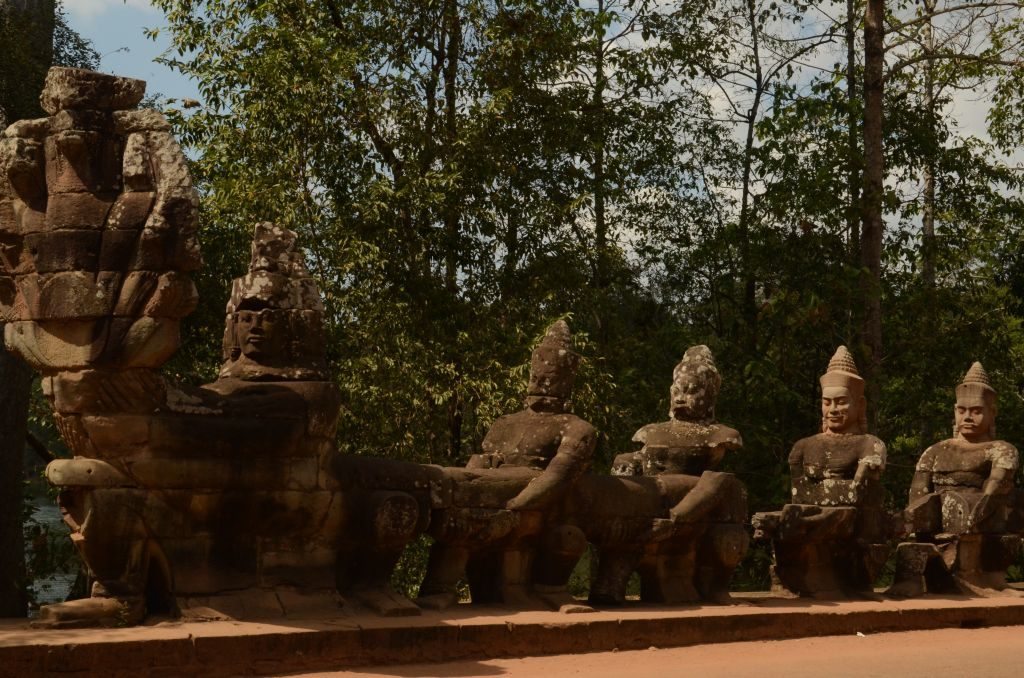 At the entrance of Angkor Thom I am however fascinated by the carving of the giant serpent with its seven heads. It seems to be the leitmotif in this ancient Khmer city, Angkor Thom. The south entrance is flanked by two long rows of demons and deities – the equivalent of the Devas and the Asuras, riding the serpent , a mythical reference to the churning of the sea of milk. And Bayon, the State Temple of the City and first monument that I visit in this erstwhile capital of the Khmer seems to be the symbolic Mount Mandara where the churning supposedly takes place. 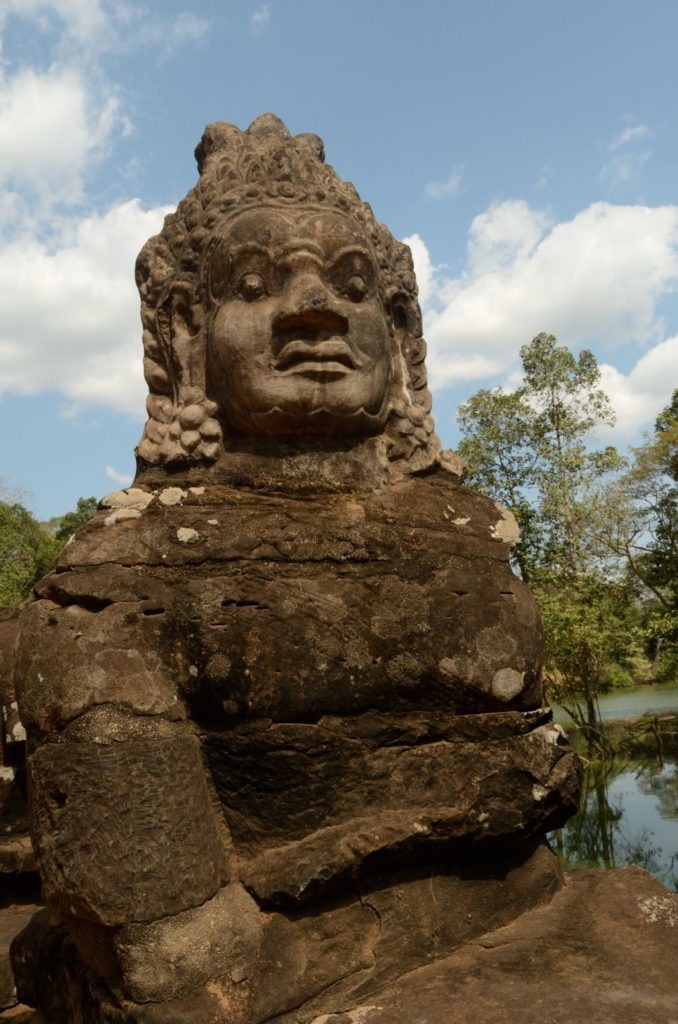 A demon stands tall For a lot of tourists, a visit to Cambodia begins and ends with Angkor Wat. But barely a few kilometres from it is the 12th century capital town of the Khmer guarded by tall towers with massive faces. And Bayon , built around the 13th century by King Jayavarman V11 lies at the centre of the town, a magnificent temple that symbolises centre of the universe and the Khmer empire. 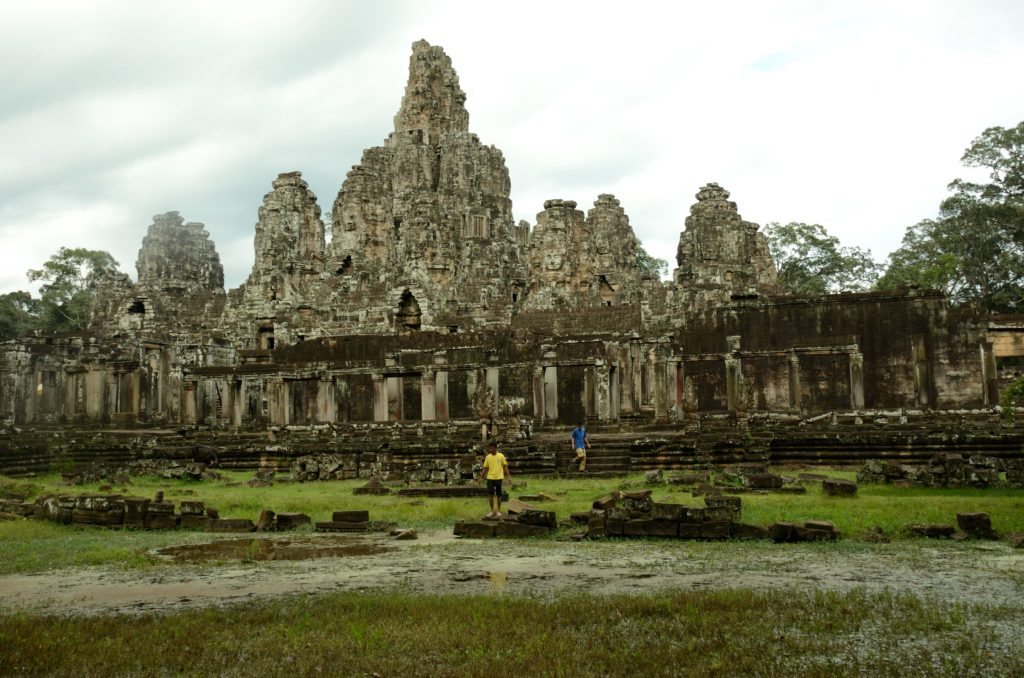 Bayon temple Angkor Thom opens into an unkempt forest, but the beauty lies in the wilderness. Monuments gape at you in this wooded landscape but nothing prepares me for my first glimpse of Bayon. If Angkor Wat looks massive and impressive, Bayon lends a mystical touch . A plethora of towers, almost 40 of them with carved faces gape at you as I realize that they are arranged in a staggering manner to form a stone mountain with smaller peaks. 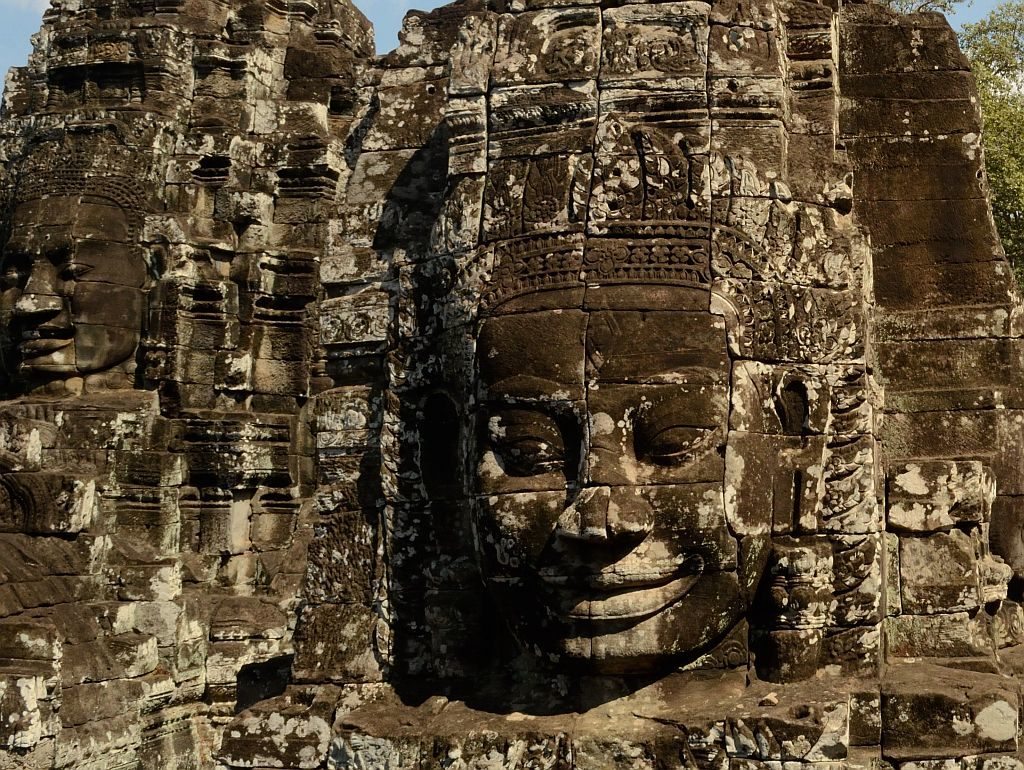 Faces of Bayon It seems very similar to the gates of the city, standing tall at over 20 metres high with four faces looking at different cardinal directions. Here, however you can keep counting the faces as they look at you from every tower, at all angles, standing tall at different heights. 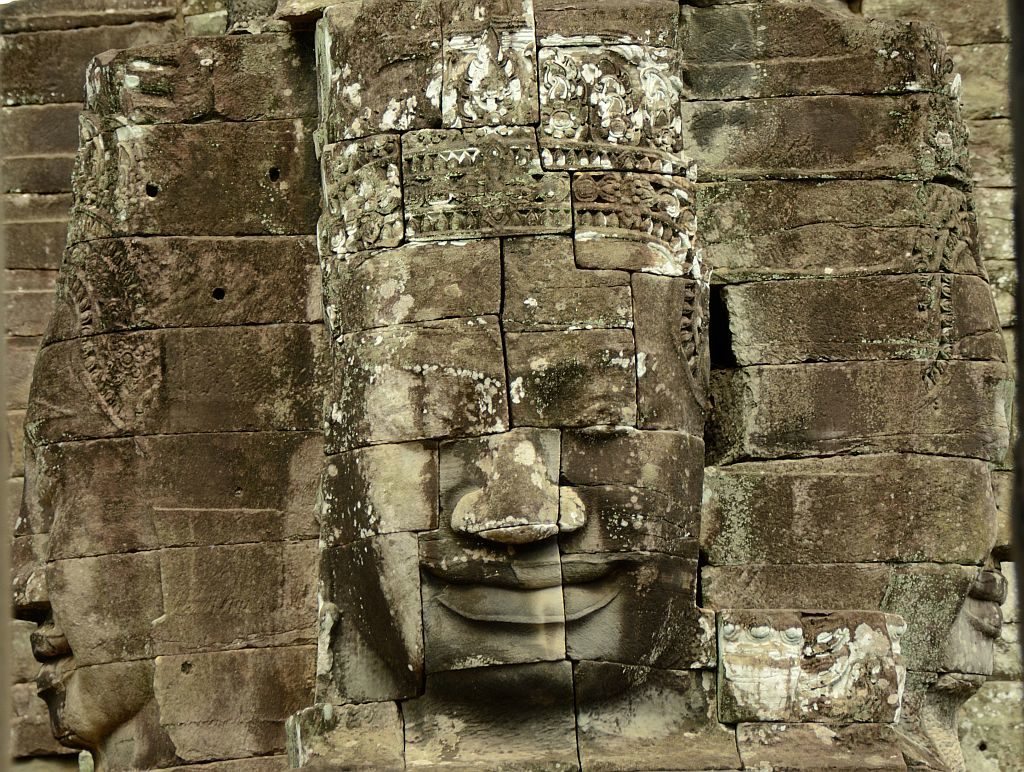 There are over 200 faces in Bayon
The books say that there are more than 200 faces, as they look down at you from the towers. The faces probably represent the king Jayavarman V11 who built the temple in the 12-13th centuries and made it his state temple. However another theory suggests that the faces represent the Boddhisatva of compassion, Lokeswara. Some scholars however believe that the two theories may coexist as the king often considered himself as a "devaraja" , as a representation of God himself and hence the faces may be symbolic of the same . 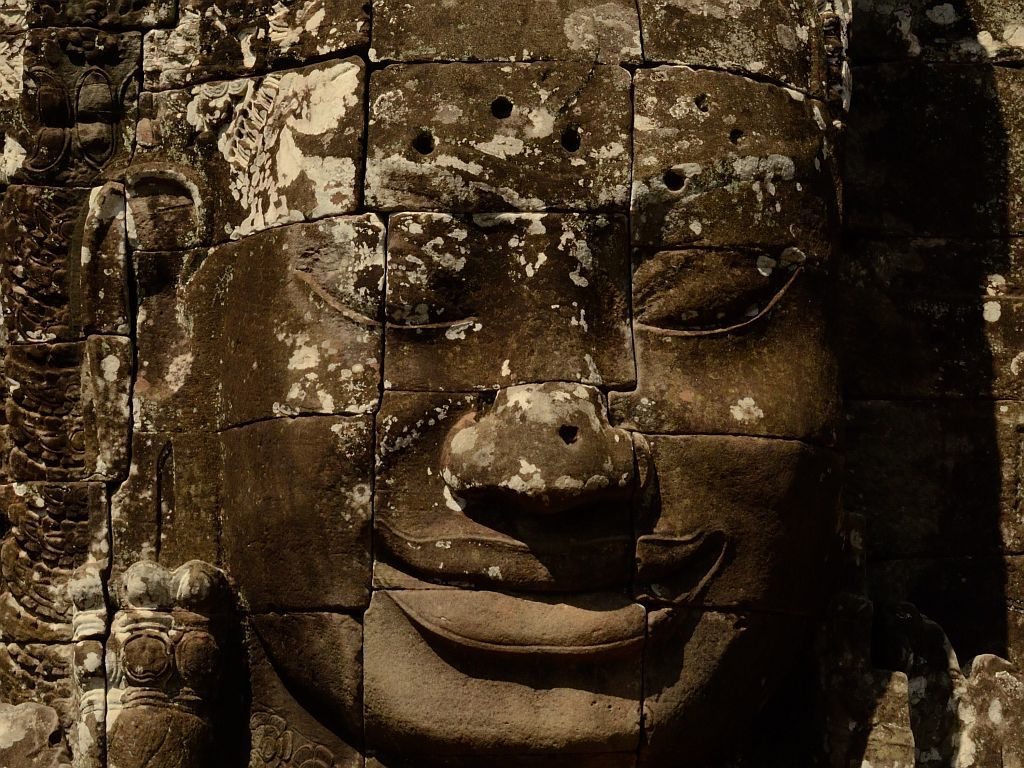 A close up of one of the faces The tall dark faces contrast with the bright coloured tourists . Some of them face the camera, others photograph the faces. Some towers have four faces , some have two. But anywhere you look, they are watching you. I am lost, for a moment. Bayon is so huge that you quickly lose track of where you are. 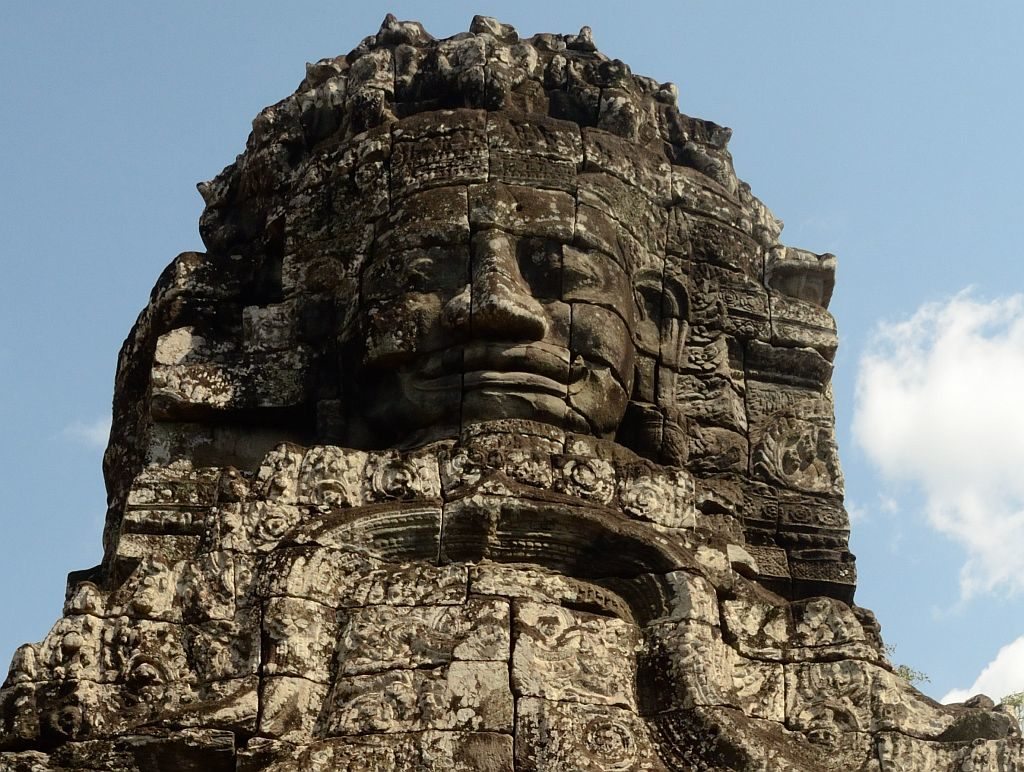 Standing atop – looking down at you Bayon they say has been built and rebuilt several times as several kings, who made it their state capital modified it as per their wishes. More towers, galleries, faces were added as time went by. The temple has two galleried enclosures and is built on multiple levels. 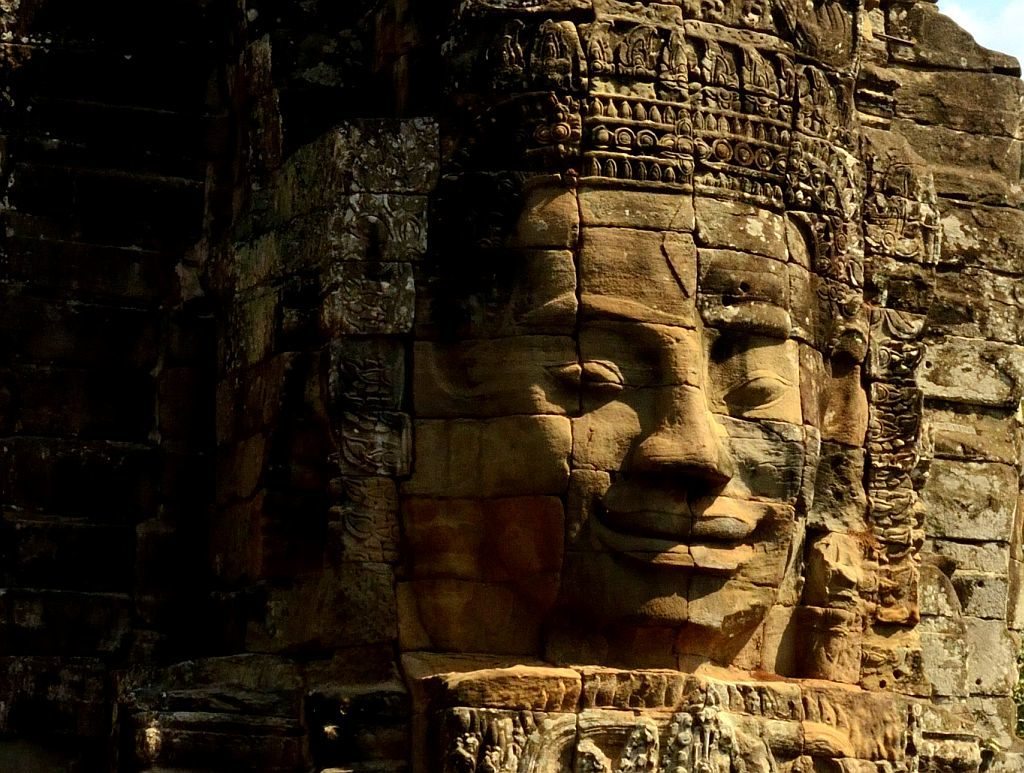 The sun strokes one of the many stone faces There are almost three storeys here and lions greet you at the very entrance as you enter through a 70 m long two tiered terrace. It is believed that there were smaller shrines housing Buddhist and local deities which were demolished later by the kings. However one can still see the traces of the same. 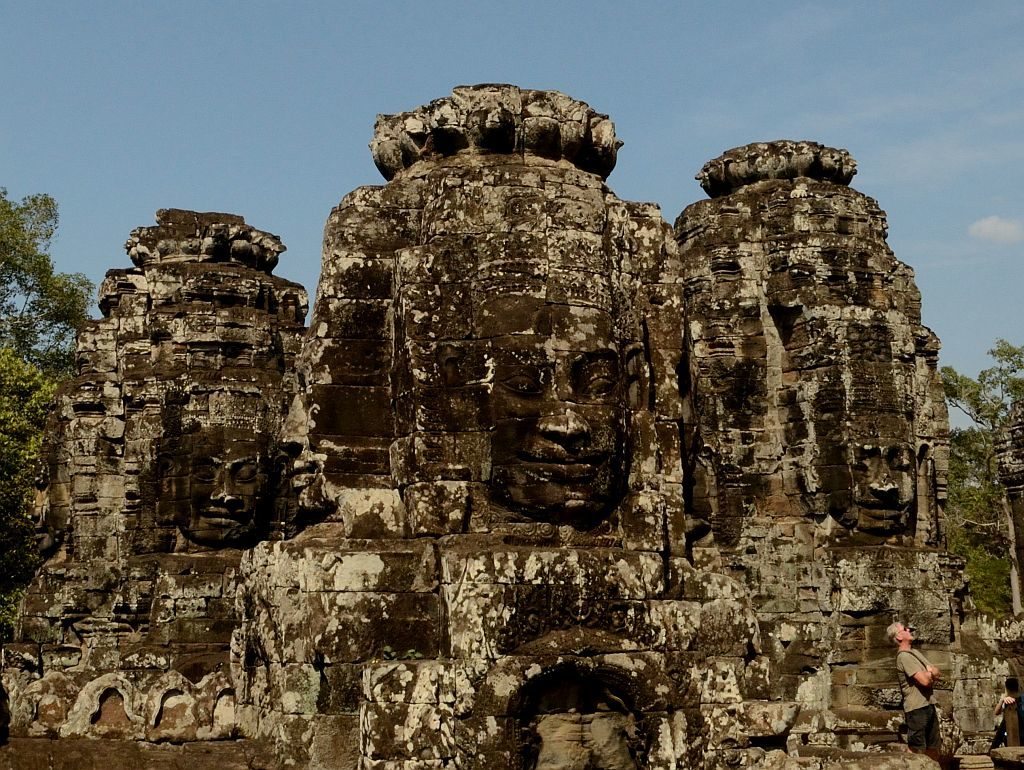 Can you count the number of faces here The temple is like a maze and it opens into small corridors and narrow staircases with apsaras carved on the walls . But it is not just the faces that overwhelm you. Look around and you see several narrative bass reliefs in the temple on the outer and inner walls of the galleries, some of them going up to 4 metres high. Legends, mythologies and local life of the Khmers are narrated here . The terrace takes you into a different world as faces juxtapose against doorways and watch you from every corner. One of the principal deities in Bayon was a tall Buddha but it is believed that it was converted to a Hindu temple under Jayavarman V111. Even today, shrines in Siem Reap often display both faiths, although in some temples, the return to Buddhism is rather obvious. Historically however the bass reliefs give you a picture of the battles during the period, mainly the scenes from the war between the Khmers and Chams. The battles are not just fought on land but on the river as well, as one can see warships appearing, presumably on the Ton Le Sap lake. 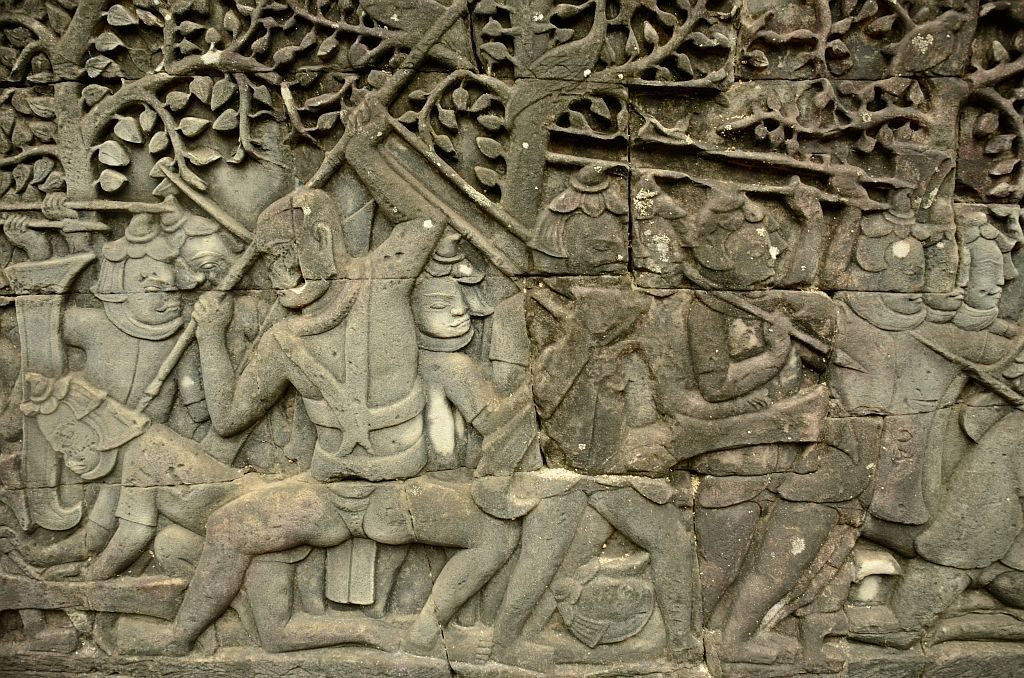 Bass relief that shows scenes of war I spend at least half a day here and yet I feel that it is barely enough to look at every sculpture or photograph the faces. The Nagas, the Apsaras, the Gods and the demons transport me to a different world as I leave the portals of Bayon to explore more of Angkor Thom. Also read Monuments that you must not miss in Angkor Thom The post The faces of Bayon- a temple in Angkor Thom Cambodia appeared first on Lakshmi Sharath. |
| You are subscribed to email updates from Lakshmi Sharath. To stop receiving these emails, you may unsubscribe now. | Email delivery powered by Google |
| Google Inc., 1600 Amphitheatre Parkway, Mountain View, CA 94043, United States | |





